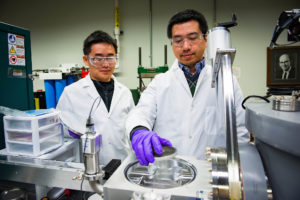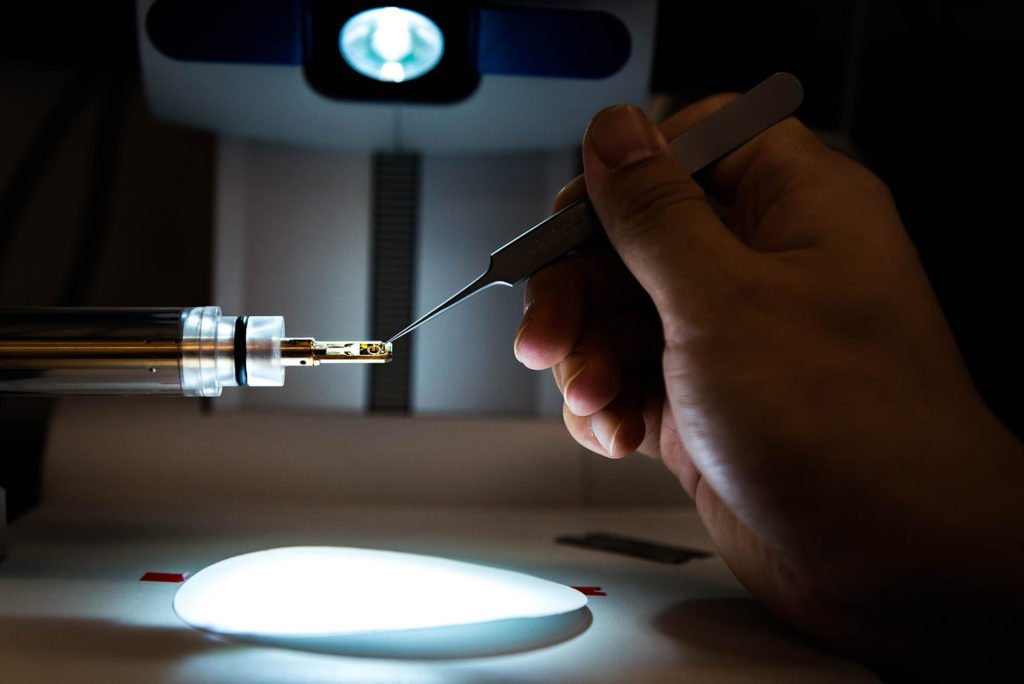
Correction: New Purdue research sees improved aluminum strength, could have structural, exterior car applications
By onAnnouncements | Market Trends | Repair Operations | Technology
Purdue announced last month researchers have developed a means of changing aluminum’s microstructure to produce strength equivalent to stainless steel, and the alloys might have ramifications on collision repair someday.
“Most lightweight aluminum alloys are soft and have inherently low mechanical strength, which hinders more widespread industrial application,” Purdue School of Materials Engineering professor Xinghang Zhang said in a statement. “However, high-strength, lightweight aluminum alloys with strength comparable to stainless steels would revolutionize the automobile and aerospace industries.”
Zhang said in an interview Wednesday that the team has yet to test the tensile strength of the new aluminum (the metric collision repairers typically reference when working on automotive steel), but compression strength has reached 1-1.5 gigapascals (1,000-1,500 megapascals).
“We hope tensile strength will also be high,” he said.
The scientist said he saw both structural and nonstructural automotive applications, for the new aluminum is scratch-resistant as well as strong.
“The coatings are very, very hard,” he said.
If brought to market, that could make aluminum closures even more attractive than they’re already expected to be for OEMs over the next decade.
The crystal lattice of a metal involves repeating atomic layers; scientists call absent layers “stacking faults” and dual layers of stacking faults “twin boundaries,” according to Purdue. While copper and silver are receptive to stacking faults, aluminum’s higher stacking fault energy make it harder to artificially induce them.
“It has been shown that twin boundaries are difficult to be introduced into aluminum. The formation of the 9R phase (a type of stacking fault) in aluminum is even more difficult because of its high stacking fault energy,” Zhang said in a statement. “You want to introduce both nanotwins and 9R phase in nanograined aluminum to increase strength and ductility and improve thermal stability.”
The team figured out how to do both.
“These results show how to fabricate aluminum alloys that are comparable to, or even stronger than, stainless steels,” Zhang said in a statement. “There is a lot of potential commercial impact in this finding.”
A November 2017 Nature Communications paper describes a “shock-induced” 9R phase in aluminum, according to Perdue. Rice University researchers who also worked on the project used a laser to shoot microscopic silicon dioxide particles into thin aluminum film at 1,342.16 miles per hour (600 meters per second).
“Here, by using a laser-induced projectile impact testing technique, we discover a deformation-induced 9R phase with tens of nanometers in width,” wrote Purdue postdoctoral research associate Sichuang Xue, the study’s lead author.
The technique could be attractive to a manufacturer for its reduced cost, based on another statement by Zhang.
“Say I want to screen many materials within a short time,” Zhang said. “This method allows us to do that at far lower cost than otherwise possible.”
The nanotwins Zhang referenced are delivered through a different technique described in a Jan. 22 Advanced Materials paper. This method creates 9R phases by introducing iron atoms into aluminum with”magnetron sputtering,” according to Perdue.
“Iron also can be introduced into aluminum using other techniques, such as casting, and the new finding could potentially be scaled up for industrial applications,” Purdue wrote.
“The resulting ‘nanotwinned’ aluminum-iron alloy coatings proved to be one of the strongest aluminum alloys ever created, comparable to high-strength steels.”
“Molecular-dynamics simulations, performed by professor Jian Wang’s group at the University of Nebraska, Lincoln, showed the 9R phase and nanograins result in high strength and work-hardening ability and revealed the formation mechanisms of the 9R phase in aluminum,” Zhang said in a statement. “Understand new deformation mechanisms will help us design new high strength, ductile metallic materials, such as aluminum alloys.”
Purdue suggested one use might be “wear- and corrosion-resistant aluminum alloy coatings for the electronics and automobile industries.”
The team is now scaling up for larger production quantities. “We’re still trying to do that,” Zhang said.
OEMs interested in the technology should contact Purdue; Zhang said Wednesday the team is looking for someone to take over its base patent.
Correction: An earlier version of this story incorrectly stated the researchers had produced increased aluminum ductility. While they increased the strength of the metal, they did not alter the ductility in this fashion. The article has since been corrected to reflect this.
More information:
“New research yields super-strong aluminum alloy”
Purdue, Jan. 25, 2018
Purdue Engineering YouTube channel, Jan. 26, 2018
“High-Strength Nanotwinned Al Alloys with 9R Phase”
Advanced Materials via Wiley Online Library, Jan. 22, 2018
“High-velocity projectile impact induced 9R phase in ultrafine-grained aluminium”
Nature Communications, Nov. 21, 2017
Images:
Purdue postdoctoral research associate Sichuang Xue, left, and grad student Qiang Li, ready a sample for their aluminum alloy research. (Marshall Farthing/Purdue)
A sample of material produced in new aluminum research is prepared for study under a transmission electron microscope. (Marshall Farthing/Purdue)

